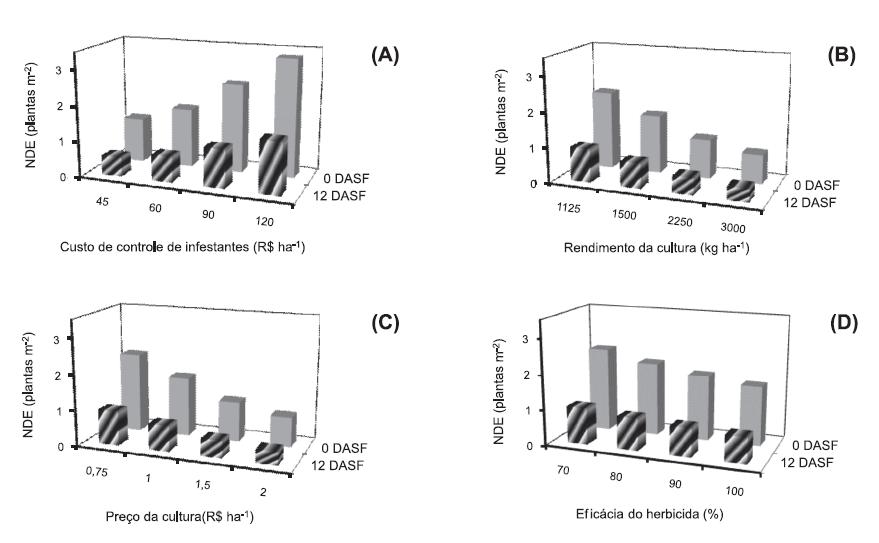This study aimed to assess the impact of Euphorbia heterophylla(EPHHL) interference at different densities and sowing dates on common bean grain yield and its components, and to determine crop weed economic threshold (WET). The field experiment consisted of a randomized block design in a split plot arrangement of the treatments, with four replicates. On the main plots, eight densities of EPHHL (0, 6, 10, 17, 29, 49, 83 and 142 pl m-2) were allocated; and on the subplots, there were two sowings of weeds (12 days before and simultaneous to the bean crop sowing). The common bean grain yield losses were directly proportional to weed density. Simultaneous employment of crop and weed resulted in the maximum 48% of bean grain yield loss. The sowing of EPHHL 12 days before bean reduced crop grain yield in 60%. The number of pods per plant was the main yield component affected by weed interference. Each EPHHL plant has reduced from 2.4 to 5.5% the common bean grain yield, when sowed simultaneous and 12 days prior to the crop, respectively. Sensitivity analysis indicate that the WET depended on the crop grain yield potential, the efficiency of the herbicide, the crop value, and the cost of EPHHL control. However, in all the simulations, the WET was very low (< 3.3 plants m-2), which emphasizes the need of residual herbicides to avoid crop economic losses.
competition; Phaseolus vulgaris; loss of yield; critical level of damage; rectangular hyperbole



